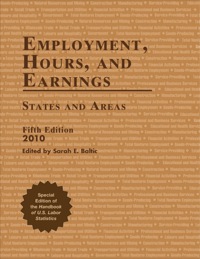Assume that o company makes only three products: Product A. Product 8, and Product C Currently, the company uses a traditional cost system that relles on plantwide overhead cost allocation based on direct labor-hours. It is considering replacing its traditional cost system with an activity based costing (ABC) system for internal management purposes. The ABC system would include a total of four activitles: Assembly (allocated to products based on direct labor-hours), Machine Setups (allocated to products based on number of setups), Material Handling (allocated to products based on the number of material moves), and Product Design (allocated to products based on the number of products) Number of units produced Direct labor hours per unit Number of setups Number of material moves Number of products Product A 1,000 units 2 hours 30 setups 600 moves 1 product Product B 7,000 units 2 hours 50 setupa 400 moves 1 product Product c 2.000 unita 2 hours 20 setups 200 moves 1 product Using the activity-based costing approach, what percent of the company's total Material Handling activity cost would be allocated to Product B? Saves En In its first year of operations a company produced and sold 70,000 units of Product A ata selling price of $20 per unit and 17,500 units of Products at a selling price of $40 per unit. Additional information relating to the company's only two products is shown below. Product A $436,300 $200,000 Products $251,700 $104,000 Direct materials Direct labor Manufacturing overhead Cost of goods sold Total $ 688,000 304,000 608,000 $1,600,000 The company created an activity-based costing system that allocated its manufacturing overhead costs to four activities as follows: Activity Activity Cost Pool (and Activity Measure) Machining (machine-hours) Setups (setup hours) Product design (number of products) Other (organization-sustaining costs) Total manufacturing overhead cost Manufacturing Overhead $213,500 157,500 120,000 117,000 $608,000 Product A Product B 90.000 62,500 75 300 1 1 NA NA Total 152,500 375 2 NA The company's ABC implementation team also concluded that $35,500 and $114,500 of the company's advertising expenses could be directly trace Product A and Product B, respectively. The remainder of its selling and administrative expenses ($400,000) was organization-sustaining in nature. The company's activity-based castina.system would report..noduct.marain for.Product.A.cf Assume the following budgeted information for a merchandising company: Budgeted sales (all on credit) for November December, and January are $250,000, $220,000, and $200,000, respectively. Cash collections related to credit sales are expected to be 75% in the month of sale, 25% in the month following the sale. The cost of goods sold is 65% of sales. Each month's ending inventory equals 20% of next month's cost of goods sold. 40% of each month's merchandise purchases are paid in the current month and the remainder is paid in the following month. Monthly selling and administrative expenses that are paid in cash in the month incurred total $20,500 Monthly depreciation expense is $20,000. The expected cash disbursements for merchandise purchases in December are: Assume the following information: Sales Variable expenses Contribution margin Fixed expenses Net operating income Amount $300,000 120,000 180,000 60,000 $120,000 Per Unit $40 16 $24 if the company decides to pay a sales commission of 2.5% for each unit sold above the break-even point what net operating income will it earn if it sells 3,000 units? Assume that a merchandising company provided the following beginning and ending budgeted balance sheets for forthcoming month Cash Accounts receivable Inventory Buildings and eguipment Accumulated depreciation Total assets Beginning Balances $ 30,000 13,000 20,000 100,000 (25,000) $138,000 Ending Balances $ 38,000 16,000 18.000 100,000 (30,000) $142,000 Accounts payable Common stock Retained earnings Total liabilities and stockholders' equity $ 4,000 60,000 74,000 $138,000 $5,000 60,000 77,000 $142,000 Assuming the company paid a $4.000 dividend during the period, how much net income must be shown on the company's budgeted income statement











